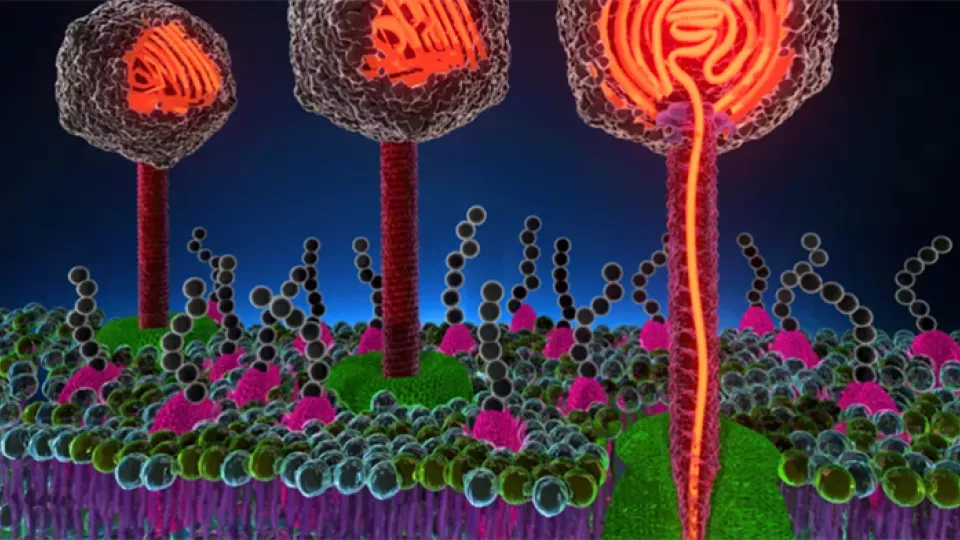Viruses lack their own metabolism and the ability to replicate independently; they are entirely dependent on a host cell to multiply. Instead, the virus hijacks the internal machinery of the infected cell to produce new virus particles, which are then released and spread to infect other cells.
In most cases, the virus’s genetic material, DNA, is enclosed within a protective protein shell called a capsid. A research group at Lund University is working to understand the process by which the virus ejects its genetic material from the capsid and into cells and what causes the virus’s DNA to be released.
Higher temperatures caused stiffer DNA
It all began with a study published in 2014, where Lund University researchers observed that there seems to be a sudden change in the virus’s genetic material when exposed to the infection temperature, around 37 degrees.
“The more we raised the temperature, the stiffer the virus’s DNA became. And then suddenly, at the infection temperature, something happened. It was as if there was no DNA left in the virus particle – the stiffness disappeared,” says Alex Evilevitch, a professor of cell biology at Lund University.
Observing the appearance of DNA in a virus particle is not something that can be done in a snap.
Can changes in the surrounding temperature affect the spread of the virus’s DNA? The study garnered significant attention in the research community, but detailing what occurs has been a challenge and time-consuming. As an experimental model, the researchers examined what happens when exposing phage viruses – viruses that attack bacteria – to temperature increases.
“Observing the appearance of DNA in a virus particle is not something that can be done in a snap. Their genetic material is delicate, and difficult to image, and moreover, phage viruses are very small – approximately ten times smaller than a bacterial cell. However, with the help of the synchrotron research facility NIST in Maryland, USA, and thanks to a special grant from the Swedish Research Council, we were ultimately able to use neutron light to image the structure of phage virus DNA and its density inside the capsid and see how these changed at different temperatures,” explained Alex Evilevitch.
DNA exiting the virus, entering the cell
In the current study, now published in PNAS, they demonstrate that the ambient temperature plays a crucial role when the capsid opens, and ”DNA bursts out” and enters the cell. The cell becomes infected so that phage virus particles can divide and spread to adjacent bacterial cells.
“We have also observed that the change in the DNA structure is directly linked to how effective the virus is at infecting the host cell”, commented Alex Evilevitch.
The researchers’ interest in understanding more about how the virus’s capsid and DNA work is partly to comprehend how DNA and RNA can be packed into such incredibly small volumes and how they can be injected so rapidly into the cell during the infection.
“This provides us with a greater understanding of how quickly DNA can exit the virus and enter the cell and may be relevant for how one can turn a virus on and off – the fundamental principle for developing new antiviral agents. It may also have significance for how nucleic acids are packaged for gene therapy purposes,” said Alex Evilevitch.
Can the study be interpreted as higher body temperature increasing the risk of infection spread?
“The results point in that direction. The structure of the virus’s genetic material and its mechanical properties change already when the body temperature rises to 37 degrees. We also see that a temperature increase affects the speed of virus spread. However, we have so far demonstrated this only in cell culture in our laboratory, and future studies are needed, taking into account other factors that affect the course of infection, such as the immune response.”
Publication:
Link to the article in PNAS:
Temperature-induced DNA density transition in phage λ capsid revealed with contrast-matching SANS


